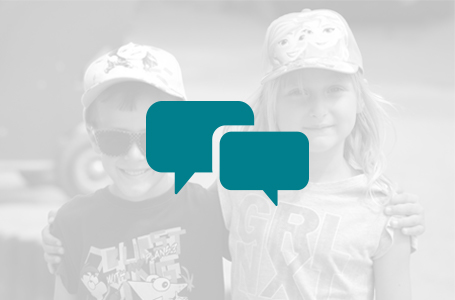
Adapted from the Child Mind Institute article
Parents are often at a loss about how to talk with their children about racism. But whether they see it on the news or in their communities, children are aware of racist violence. So what can parents do? The below suggestions are adapted from an article from the Child Mind Institute (https://childmind.org/article/ racism-and-violence-how-to-help-kids-handle-the-news/).
Talking with our children about racism requires age-appropriate communication strategies and exploring resources together. Even though it can be hard, the most important part is just to start talking!
Here are some tips to keep in mind:
Try to be calm, but don’t hide your emotions It is helpful to talk with your children when you are calm and centered, but sharing your feelings is important too. It makes sense to feel angry and sad in the face of injustice, and you can tell your child that. If the conversation becomes overwhelming, stop and take a few breaths.
Rely on your support system Witnessing scenes of racist violence is deeply upsetting for many parents, but for parents of children of color, it can also be traumatic. Take time to check in with your own mental health. If you’re feeling exhausted or overwhelmed, reach out to your networks for support.
Validate their feelings Children are very perceptive and may not know how to express themselves. It’s important for parents to check in, listen and ask clarifying questions. You can also encourage little kids to draw or tell stories with toys to express themselves. Meet your children where they are and acknowledge their fears, feelings and concerns.
Be clear, direct and factual Be explicit that racial violence is wrong and that people of color do not deserve what’s happening to them. It’s easy for young children to misunderstand. You can also talk about how racism has been part of our country for hundreds of years, while still emphasizing that you’re hoping for a better future.
Encourage questions Curiosity is a good thing! Don’t worry if you can’t answer all your child’s questions and don’t stop if it becomes uncomfortable. You can model how to tolerate hard feelings and research answers to big questions.
Keep the conversation open Like any important topic, racism and violence aren’t something you can have “the talk” about just once. For kids of any age and race, this is something that’s going to keep coming up, so emphasize that you’re there for them whenever they need to talk — and keep checking in proactively, too.
Explore resources together The good news is that there are many resources that families can use to continue the ongoing work of addressing racism and violence in our society. Here are some additional resources for you to explore with your children:
From Colorlines: The Dos and Don’ts of Talking to Kids of Color About White Supremacy
From Safe Space Radio: Talking to White Kids About Race and Racism
From the Center for Racial Justice in Education: Resources for Talking About Race, Racism and Racialized Violence With Kids
From We Need Diverse Books: Resources for Race, Equity, Anti-Racism and Inclusion
From the Anti-Defamation League: Children’s Books Addressing Race and Racism and Activities to Promote Social Justice
Resources for Talking to Kids About Racism and Justice Thank you for taking the time to read this article – if we are to stop racism and end violence, we need to be talking with our children about it regularly. Together we can make our community and world safer and more equitable!
